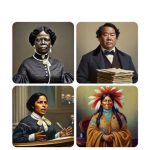Branding, Consumerism, Audience
Developed by: Leorah Marcu
Course: English/Media, Grades 7-10 Estimated time: 75 min. period
Title: Branding
This lesson covers several key media concepts, AND oral and reading skills for Grades 7-10.
Expectations (Ontario Ministry of Education):
Oral Communication
1. Listen in order to understand and respond appropriately in a variety of situations for a variety of purposes; Listening to Understand
2. Use speaking skills and strategies appropriately to communicate with different audiences for a variety of purposes; Speaking to Communicate
1.1 Purpose, 1.2 Active Listening Strategies, 1.4 Demonstrate Understanding, 2.3 Clarity and Coherence, 2.4 Appropriate Language
Reading
1. Read and demonstrate an understanding of a variety of literary, graphic, and informational texts, using a range of strategies to construct meaning; Reading for Meaning
2. Recognize a variety of text forms, text features, and stylistic elements and demonstrate understanding of how they help communicate meaning; Understanding Form and Style
2.1 Text Forms, 2.3 Text Features, 2.4 Elements of Style
Media Literacy
1. Demonstrate an understanding of a variety of media texts; Understanding Media Texts
2. Identify some media forms and explain how the conventions and techniques associated with them used to create meaning; Understanding Forms, Conventions, and Techniques
1.1 Purpose and Audience, 1.2 Interpreting Messages, 1.3 Evaluating Texts, 1.4 Audience Response, 1.5 Critical Literacy, 1.6 Production Perspectives, 2.1 Form, 2.2 Conventions and Techniques
Overview:
This lesson introduces students to the concept of branding and elements of advertising by examining examples of print advertising, participating in a hands-on group activity and responding to short video.
Preparation Required
• Choose a variety of (current) print ads to deconstruct with the class as a whole
• Choose print ads to use for the Image/Lifestyle Ad Activity and cover any text with construction paper (regular white paper is see-through!)
• The video is from disc 2 of Scanning Television (response sheet questions adapted from the Teacher’s Guide)
Accommodations/Options
Groupings for the activity can be divided to include a mix of students with a variety of abilities. Teachers may even choose to extend the length of time groups require to deconstruct the print advertisements and assign individual roles for each group member including: time keeper, encourager, recorder, and speaker. Group members can be assessed based on their performance.
- Hook – 5 min.
-Write on the blackboard:
In our lives, where is advertising NOT?
-Challenge students to think of a space without advertising
-Ask students to guess how many advertisement they are exposed to in one day ( answer: The average North American is exposed to approx. 3000 ad messages per day)
Students
– Offer suggestions; Guess the amount of advertisements
2. Slogan Association – 15-20 min.
– Once students have set up their page with a list from 1-10, say the following
1- Just do it
2- The quicker picker-upper
3-I’m loving it
4- 1,000 songs in your pocket
5- Easy, Breezy, Beautiful
6- Zoom, Zoom
* Students will:
-Listen to the following popular slogans and write down the first thing that comes to mind
-Write a chart on the board (object, brand in columns) 6 rows
* Students will:
-Copy the chart in their notebooks
– Ask students what they wrote for each slogan, write mentions of product under the object heading and companies under the brand heading
* Students will:
-Share responses
-Also record the amount of responses for each object and brand
-Ask students why the number of brand responses is higher than object responses
* Students will:
-Offer ideas
-Ask student what is the difference between the two columns
ie: what is the difference between a sporting shoe and Nike?
-write the definition of a branding on the board: branding: When a product’s name becomes associated with a company’s name
ie: Kleenex/tissue
* Students will:
-Copy definition in their notebooks
-Ask students what is similar with all brand names
answer: one word or catchy phrase
* Students will:
-Share ideas
-Tell students that a brand is associated with a lifestyle, so essentially consumers are buying an IMAGE
3. Image/Lifestyle Ad Activity
– Present a variety of print advertisements
-Ask students:
-What is the brand?
-What is the object?
-What is the lifestyle/image projected?
* Students will:
– Go around the class and have students take turns answering a question for each ad
– Divide the class into groups of 4/5
– Hand out 1 print advertisement with text covered to each group
* Students will:
-in groups, discuss an ad and guess the object, brand, and lifestyle
-Each group will present their findings and ask the class if there are additional ideas
4. Branding Video
-Watch “Branding” from Scanning Television
– Have students fill out the response sheet, allow students to work on it and hand it in at the end of the period
* Students will:
-Watch attentively in order to answer the response sheet
Formative Assessment:
Group participation/presentation skills
Response Sheet for “Branding”
Response Sheet for “Branding”
1. Jack Myers says, “Brands have a potential to unify a world of diverse cultures, standards, interests, and desires.”
Provide examples from the video of this.
What are the implications of such unification?
_____________________________________________________________
_____________________________________________________________
_____________________________________________________________
2. Myers admits, “Coke doesn’t win the taste test, but it’s the best brand, and it’s the brand that really delivers the message.”
What message is Myers referring to?
_____________________________________________________________
_____________________________________________________________
_____________________________________________________________
3. “Where I think there’s a shift is the question of, ‘How many eyeballs are we reaching?’ to ‘Who are these people who are watching what are their core values, their sense of themselves, and how do we put ourselves in environment that makes that link?’ ” – Jack Myers
How does this statement relate to how branding is different from regular advertising?
_____________________________________________________________
_____________________________________________________________
4. “Media have disconnected from marketers, and this book [Myers’ Reconnecting with Customers] is about reconnecting by making sure you’re relevant to your customers.” – Jack Myers
List examples of advertisements you feel try to connect with your demographic. How effective is this?
_____________________________________________________________
_____________________________________________________________



